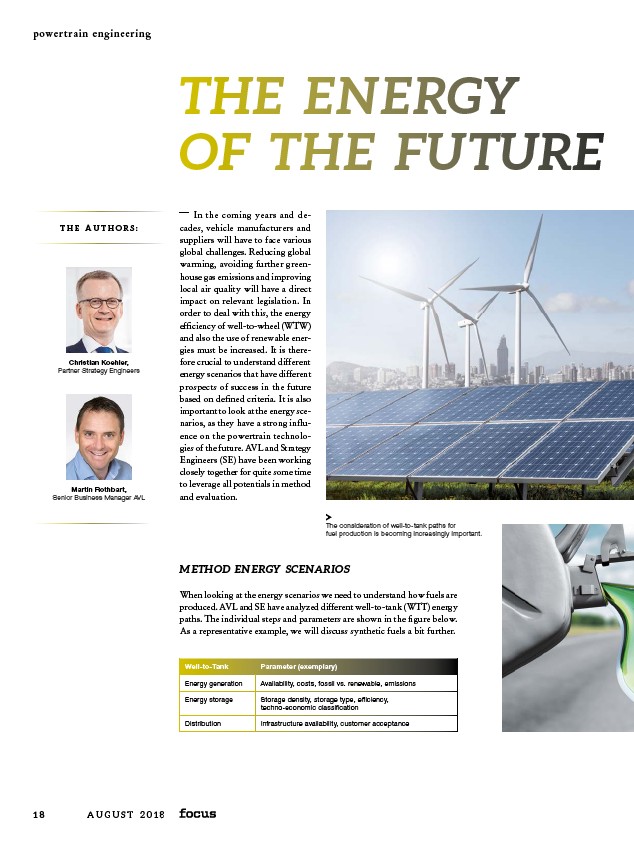
powertrain engineering
THE AUTHORS:
THE ENERGY
OF THE FUTURE
The consideration of well-to-tank paths for
fuel production is becoming increasingly important.
In the coming years and decades,
vehicle manufacturers and
suppliers will have to face various
global challenges. Reducing global
warming, avoiding further greenhouse
gas emissions and improving
local air quality will have a direct
impact on relevant legislation. In
order to deal with this, the energy
efficiency of well-to-wheel (WTW)
and also the use of renewable energies
must be increased. It is therefore
crucial to understand different
energy scenarios that have different
prospects of success in the future
based on defined criteria. It is also
important to look at the energy scenarios,
as they have a strong influence
on the powertrain technologies
of the future. AVL and Strategy
Engineers (SE) have been working
closely together for quite some time
to leverage all potentials in method
and evaluation.
METHOD ENERGY SCENARIOS
When looking at the energy scenarios we need to understand how fuels are
produced. AVL and SE have analyzed different well-to-tank (WTT) energy
paths. The individual steps and parameters are shown in the figure below.
As a representative example, we will discuss synthetic fuels a bit further.
Well-to-Tank Parameter (exemplary)
Energy generation Availability, costs, fossil vs. renewable, emissions
Energy storage Storage density, storage type, efficiency,
techno-economic classification
Distribution Infrastructure availability, customer acceptance
Christian Koehler,
Partner Strategy Engineers
Martin Rothbart,
Senior Business Manager AVL
1 8 A U G U S T 2 0 1 8